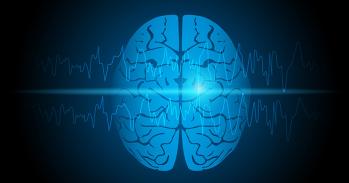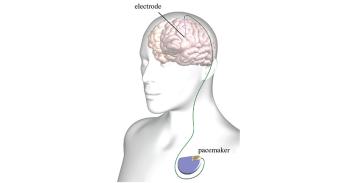
Research suggests that the main cause of the disorder may lie instead in structural differences in the grey matter in the brain.
Research suggests that the main cause of the disorder may lie instead in structural differences in the grey matter in the brain.
These findings question the previously accepted view that major abnormalities in dopamine function are the main cause of ADHD in adult patients.
Professor Trevor Robbins
A new Cambridge study questions previous suggestions that attention deficit hyperactivity disorder (ADHD) is the result of fundamental abnormalities in dopamine transmission, and suggests that the main cause of the disorder may lie instead in structural differences in the grey matter in the brain. This landmark study, published in Brain, could significantly improve understanding of how ADHD is caused and help inform the development of treatments in the future.
The double-blind study, which was carried out by researchers at the University of Cambridge MRC/Wellcome Trust Behavioural and Clinical Neuroscience Institute (BCNI) and funded by the Medical Research Council (MRC), found that administering methylphenidate (more commonly known as Ritalin) to healthy adult volunteers as well as those who exhibit symptoms of ADHD as adults, led to similar increases of the chemical dopamine in their brain. Both groups also had equivalent level of improvements as a result of the drug when tested on their ability to concentrate and pay attention.
Dopamine is a crucial chemical for concentration or sustained attention, working memory and motivational processes in the brain and acting as a chemical transmitter between brain cells by combining with specialised receptors on nerve cells. Ritalin works by increasing the levels of dopamine which binds to the receptors and increases the flow of communication between these cells.
By using positron emission tomography (PET) imaging techniques to measure dopamine receptors, the researchers were able to measure how Ritalin affects dopamine in patients with ADHD and people unaffected by the condition. In both groups, volunteers were given either a dose of Ritalin or a placebo pill. Researchers then analysed the results of tasks done by the volunteers which tested their ability to concentrate and pay attention over a period of time.
Patients with ADHD, who had significant loss of grey matter in the brain, as measured by magnetic resonance imaging, showed significant impairments in attentional performance compared with healthy individuals. Consistent with its therapeutic use in ADHD, Ritalin improved sustained attention performance in the patients. However, dopamine receptor levels in an area of the brain called the striatum were similar in the patients and healthy individuals. Ritalin also increased dopamine levels in the striatum to a similar degree, importantly suggesting that there was no underlying deficiency in dopamine function in the ADHD patients. Interestingly, Ritalin also improved sustained attention performance in some healthy individuals as well, and this overall ability of the drug to improve performance (with or without ADHD) was related to the increases in dopamine levels in the striatum caused by Ritalin.
Professor Barbara Sahakian who led the study at the BCNI said: “We feel these results are extremely important since they show that people who have poor concentration improve with methylphenidate (Ritalin) treatment whether they have a diagnosis of adult ADHD or not. These new findings demonstrate that poor performers, including healthy volunteers, were helped by the treatment and this improvement was related to increases in dopamine in the brain.”
Professor Trevor Robbins, co-author of the study and Director of the BCNI, said: “These findings question the previously accepted view that major abnormalities in dopamine function are the main cause of ADHD in adult patients. While the results show that Ritalin has a 'therapeutic' effect to improve performance, it does not appear to be related to fundamental underlying impairments in the dopamine system in ADHD.”
This work is licensed under a Creative Commons Licence. If you use this content on your site please link back to this page.





